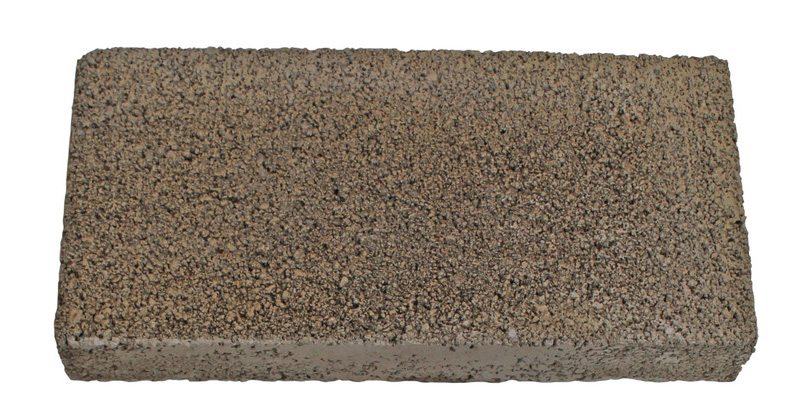Ensuring Durability and Optimal Performance
Introduction
Fire bricks are specialized heat-resistant materials made from mineral aggregates. They are commonly used in fireplaces, high-heat environments, and other applications requiring insulation and protection against extreme temperatures. This article will explore the importance of curing fire bricks before use to ensure their durability and optimal performance.
Fire bricks are essential for constructing fireplaces and stoves because they can withstand high temperatures without cracking or breaking. They are designed to absorb and distribute heat evenly, providing efficient insulation and protection. Fire bricks are typically made from materials such as clay and silica, which have excellent resistance to heat. These materials are mixed with additives to enhance their strength and durability.
Understanding Fire Bricks
Fire bricks are available in various patterns and colors, allowing for customization in design. Fire bricks need to comply with building codes and standards to ensure safety. When installing fire bricks, using mortar compatible with the manufacturer's specifications or high-heat construction adhesives is essential. This ensures proper installation and longevity of the fire bricks.
Fire bricks are designed to withstand high temperatures, making them ideal for fireplaces, ovens, and kilns. They provide excellent insulation, preventing heat loss and ensuring efficient heating. Fire bricks are also resistant to thermal shock, which occurs when a sudden temperature changes. This resistance is due to the low thermal conductivity of the materials used in fire bricks, which allows them to absorb and distribute heat evenly.
The Importance of Curing Fire Bricks
Curing fire bricks is a crucial step in their preparation. It involves gradually exposing the fire bricks to increasing temperatures to strengthen them and enhance their resistance to heat. Failure to cure fire bricks can lead to cracking and breaking, compromising their effectiveness. Properly fixed fire bricks offer increased durability and longevity, improved heat resistance, and overall performance.
Curing fire bricks helps to remove any residual moisture that may be present in the bricks. When fire bricks are exposed to high temperatures without being adequately cured, the water trapped inside them can expand rapidly, leading to cracks or even the destruction of the bricks. Curing allows the moisture to be gradually released from the bricks, preventing any potential damage.
How to Cure Fire Bricks
It is recommended to follow a step-by-step process to cure fire bricks properly. Start by lighting small fires and gradually increase the intensity over time, allowing the fire bricks to adjust to the heat. It is advisable to use softer wood, like pine, for the initial fires to prevent excessive heat. After each fire, allow the fire bricks to cool down entirely before lighting another fire. This allows for expansion and contraction, preventing potential damage to the bricks. It is essential to refer to the manufacturer's instructions for specific curing recommendations.
During the curing process, monitoring the fire bricks' temperature is crucial. Gradually increase the temperature over several fires, ensuring that the bricks are not exposed to sudden changes in temperature. This gradual increase in temperature allows the fire bricks to expand and contract without cracking. It is also essential to enable the fire bricks to cool down entirely between each fire to prevent thermal shock.
Benefits of Curing Fire Bricks
Curing fire bricks offers several benefits. Firstly, it increases the durability and longevity of the fire bricks, ensuring they can withstand repeated exposure to high temperatures. Additionally, curing helps prevent cracking and breaking, which can occur if the bricks are not adequately prepared. Cured fire bricks also exhibit improved heat resistance, allowing them to withstand the intense heat generated in fireplaces or stoves efficiently.
By curing fire bricks, you strengthen them and enhance their ability to withstand extreme temperatures. This not only extends the lifespan of the fire bricks but also ensures their optimal performance. Cured fire bricks provide better insulation and protection, allowing for more efficient heating and reducing the risk of damage to the surrounding structure.
Debunking Common Misconceptions
A few things need to be addressed about curing fire bricks. One misconception is that fire bricks do not require curing. However, curing is necessary to ensure the bricks' durability and optimal performance. Without proper curing, fire bricks may not be able to withstand the intense heat generated in fireplaces or stoves, leading to cracking or breaking.
Another misconception is that curing fire bricks is a time-consuming process. While it requires time and patience, the benefits outweigh the effort. Curing fire bricks can take several days to complete. Still, the result is fire bricks that are stronger, more durable, and better able to withstand high temperatures. The time spent curing the fire bricks is an investment in their longevity and performance.
Lastly, some believe curing is only necessary for certain fire bricks. Curing is essential for all fire bricks to maximize their performance and lifespan. Whether the fire bricks are made from clay, silica, or other materials, the curing process helps to remove any residual moisture and strengthen the bricks, making them more resistant to heat and less prone to cracking or breaking.


/1003/site-assets/logo.png)


